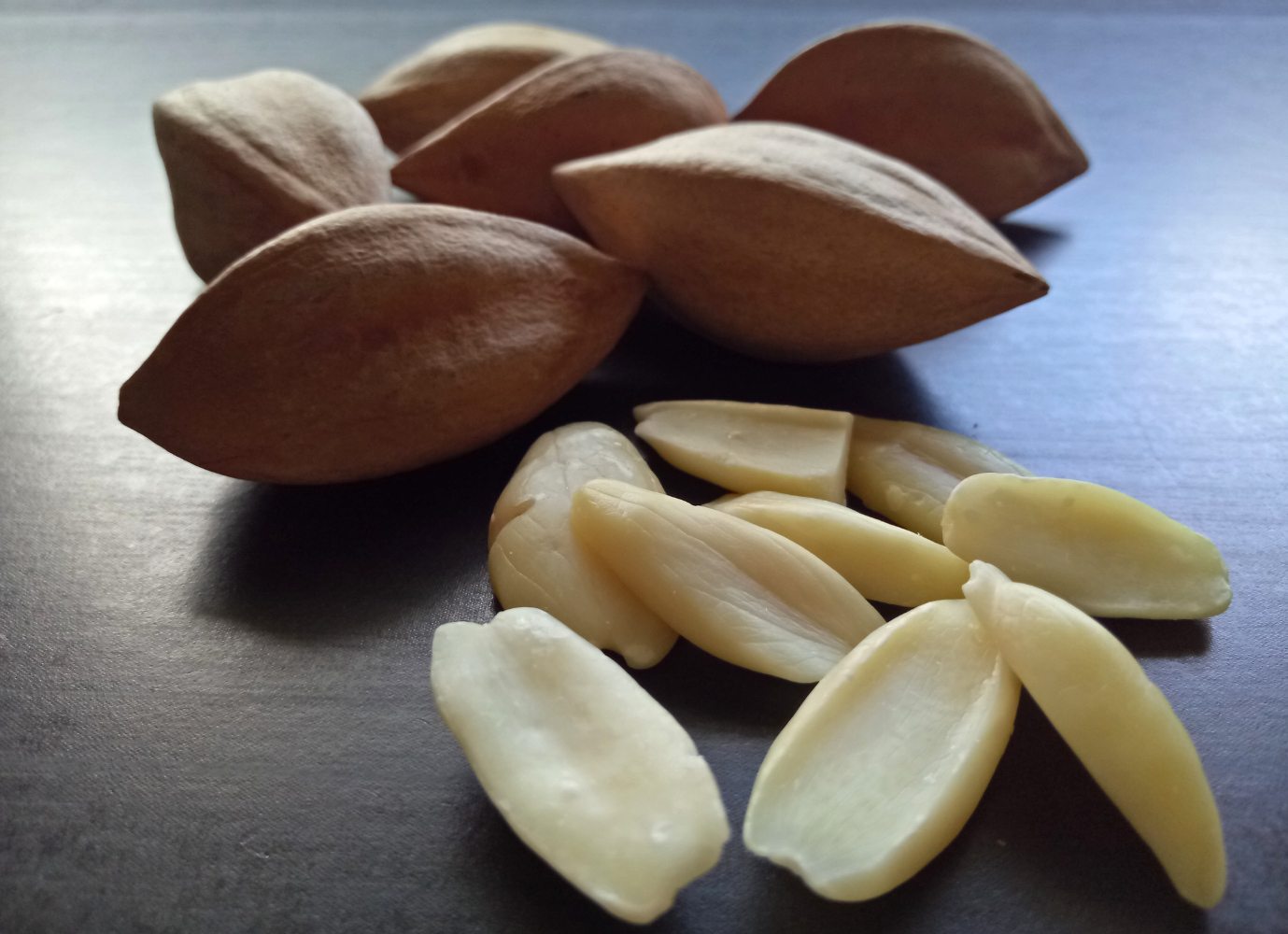Scientific Name: Canarium Ovatum

Type: Drupe
Native to the Philippines , Canarium Ovatum are tall tropical trees that withstand heavy rainfall and typhoons to produce nutrient dense fruits known as Pili drupes.
These fruits contain the buttery kernels that are Pili Nuts. Not only are they delicious but are also of great nutritional significance.
Some Beneficial Properties
Below are the top 3 reasons why they can complement our diets
Healthy Fats
The high oil content in Pili nuts make them rich in heart healthy monounsaturated fats. These fats are sources of important nutrients such as Carotenoids which are precursors to Vitamin A, Tocopherols(Vitamin E) and Sterols1 which are powerful antioxidants2 and may help in lowering chloresterol3 respectively.
Rich Source of Minerals
Pili nuts, are rich in Minerals too. Not only do they contain more Magnesium than most foods, these nutrient dense nuts are also rich in Phosporous, Potassium and Calcium.These Minerals play a pivotal role in maintaining normal nerve and muscle function, supporting the immune system,and in the production of energy and proteins4.
Essential Aminos
Amino Acids are the building blocks of proteins. While our bodies are capable of making some of them anew, those that we cannot are called Essential Amino Acids. Pili Nuts contains all essential amino acids making them an excellent dietary source of essential proteins.
Amino Acid Profile per 100g5
*Essential Aminos are in Bold
| Protein | 10.80g |
|---|---|
| Tryptophan | 0.189 g |
| Threonine | 0.407 g |
| Isoleucine | 0.483 g |
| Leucine | 0.890 g |
| Lysine | 0.369 g |
| Methionine | 0.395 g |
| Cystine | 0.189 g |
| Phenylalanine | 0.497 g |
| Tyrosine | 0.381 g |
| Valine | 0.701 g |
| Arginine | 1.516 g |
| Histidine | 0.255 g |
| Alanine | 0.509 g |
| Aspartic acid | 1.222 g |
| Glutamic acid | 2.393 g |
| Glycine | 0.650 g |
| Proline | 0.471 g |
| Serine | 0.599 g |
1 Pham, Laura J. and Nico G. Dumandan. (2015)
Philippine Pili: Composition of the lipid molecular species
Journal of Ethnic Foods , Volume 2 , Issue 4 , 147 - 153
https://www.researchgate.net/publication/285215963
2 Sies H, Stahl W. (1995).
Vitamins E and C, beta-carotene, and other carotenoids as antioxidants.
Am J Clin Nutr. 1995 Dec;62(6 Suppl):1315S-1321S.
Review. PubMed PMID: 7495226.
https://www.ncbi.nlm.nih.gov/pubmed/7495226
3 AbuMweis, S. S., Barake, R., & Jones, P. J. H. (2008).
Plant sterols/stanols as cholesterol lowering agents: A meta-analysis of randomized controlled trials.
Food & Nutrition Research, 52, 10.3402/fnr.v52i0.1811.
http://doi.org/10.3402/fnr.v52i0.1811
4 National Institutes of Health, Office of Dietary Supplements
Vitamin and Mineral Supplement Fact Sheets
https://ods.od.nih.gov/factsheets/list-VitaminsMinerals/
5 USDA Food Composition Database
https://ndb.nal.usda.gov/ndb/search/list?qlookup=12145&format=Full
